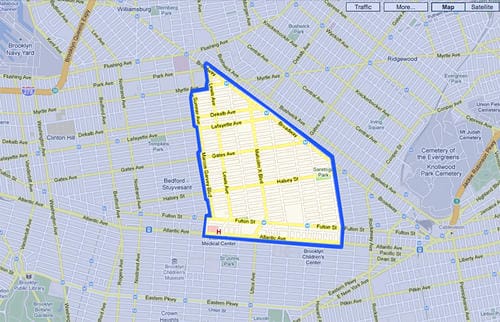
Hey, isn’t it great that crime is on the wane? We must be doing something right. Or are we? We can certainly pull up stats that say crime is going down. And we can attribute less crime to better policing, more gun ownership, less gun ownership or El Niño. The trouble is, many of the police reports behind those stats aren’t worth beans.
The Village Voice has released Part 3 of the NYPD Tapes, in which we see even more creative downgrading of crime by officers who learn the hard way that it pays to report better numbers to their superiors. The featured case involves Daryl Thomas – a serial rapist cruising below police radar. They caught him in a woman’s apartment thanks to an alert neighbor, but his previous offenses were almost invisible:
… Thomas told him that with each new assault, his brazenness and level of violence increased: “I asked him, ‘Weren’t you ever afraid that you would get caught in any of these locations?’ He goes ‘Nah. I looked around, I never saw any cops,’ ” [Detective First Grade Harold] Hernandez says. “What they do is continue to hide these complaint reports, and what happens is no one is alerted that they have a serious crime pattern in those areas.”
A Manhattan jury convicted Thomas in five cases on first-degree attempted rape, robbery, burglary, and sexual assault charges. He is currently serving a 50-year sentence in a state prison in Romulus, New York.
…
Hernandez then returned to the precinct, paged through all of the complaint reports, and hit pay dirt. Precinct patrol supervisors, he says, had classified the prior incidents as criminal trespassing, a misdemeanor, except in one case, criminal possession of a weapon.
“They used every non-felony you could think of,” he says. “If you read the narrative, the minimum they should have been classified as was burglary 1. The minute he grabs you in the hallway, armed, that makes it a burglary in the first degree.”
To a dedicated investigator like Hernandez, that was shocking enough. That meant that for nearly two months, a serial robber-rapist was attacking women in Washington Heights, but the police didn’t have the information that would have helped catch him.
…
Marin added that the obsession with numbers has altered the police officer’s job. “The main thing is handling the jobs—that’s what makes you a good police officer,” he says. “All they see is business, quotas, numbers, money.”
…
In Hernandez’s view, the CompStat model made great strides in policing New York City, but at some point along the way, particularly during the long tenure of Police Commissioner Ray Kelly, the system became distorted into more of a contest for the right statistics—a drop in major crime complaints with a corresponding rise in quotas for summonses, arrests, and stop-and-frisks: “As time passed, there came a time for upper-management officers to attain higher rank, and they began to demand higher quotas to beat the next guy’s decrease in crime,” he says. “They began to make their demands known and force officers to make these quotas with the promises of choice assignments or better working conditions.”



![Video From Monday’s Charlotte Massacre of Law Enforcement Officers in Charlotte, NC [VIDEO]](https://dev.thetruthaboutguns.com/wp-content/uploads/2024/05/C-M-LEO-massacre-218x150.jpg)